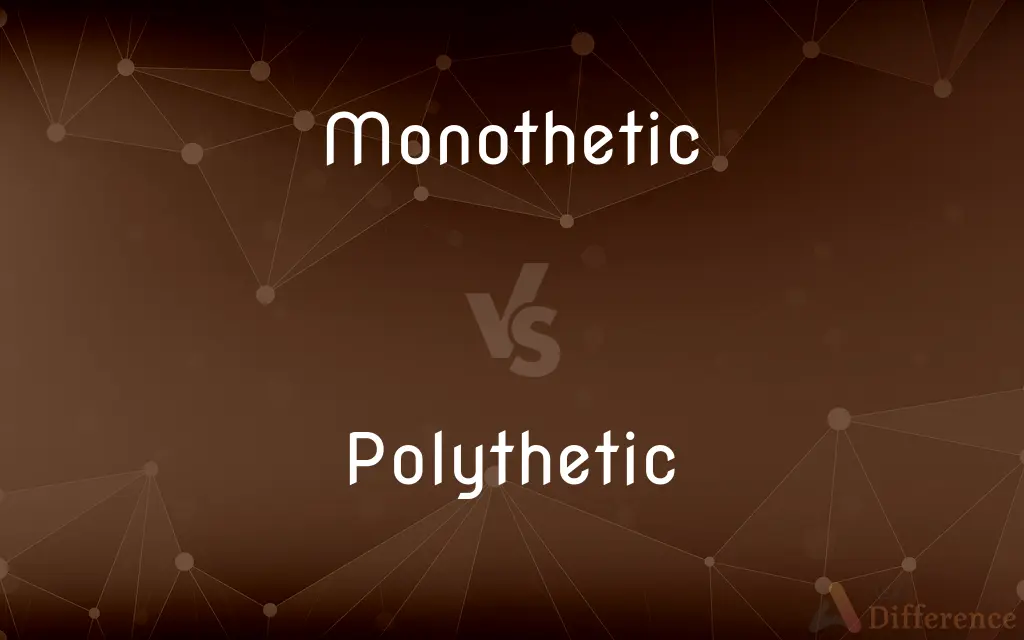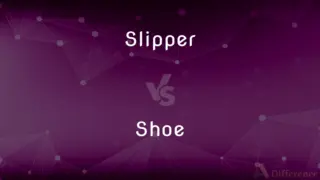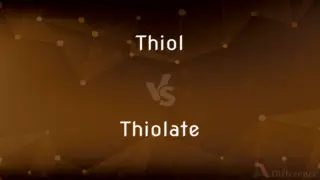Monothetic vs. Polythetic — What's the Difference?
Edited by Tayyaba Rehman — By Fiza Rafique — Updated on April 21, 2024
Monothetic classification uses a single defining trait for group membership, while polythetic classification relies on multiple, often overlapping traits.

Difference Between Monothetic and Polythetic
Table of Contents
ADVERTISEMENT
Key Differences
Monothetic classification systems identify group members based on one essential characteristic that all members must possess. On the other hand, polythetic classification does not require a single defining feature, but instead defines groups through a set of characteristics, no one of which is necessarily present in all members of the group.
In monothetic groups, the presence of a specific attribute or trait is both necessary and sufficient for membership. This approach is clear but can be restrictive. Whereas in polythetic groups, members share a greater variety of traits, allowing for more diversity within the group definitions, but making the boundaries less distinct.
Monothetic classifications are often easier to apply in fields where clear, unambiguous criteria are available and necessary, such as in certain biological classifications. Conversely, polythetic classifications are more suited to complex fields like sociology or psychology, where human characteristics and behaviors are too varied to be encompassed by a single defining trait.
The concept of monothetic versus polythetic can also apply to the classification of data in research, where monothetic approaches might simplify analysis by focusing on a single variable. In contrast, polythetic approaches can provide a more comprehensive understanding by considering multiple interrelated variables.
For example, in taxonomy, a monothetic approach might classify organisms based solely on one genetic marker, whereas a polythetic approach might classify organisms based on a variety of traits such as genetic, behavioral, and physiological characteristics.
ADVERTISEMENT
Comparison Chart
Definition
Classification based on a single defining trait
Classification based on multiple defining traits
Membership Criteria
One necessary and sufficient trait
Several traits, none individually necessary
Application Fields
Biology, strict categorization systems
Sociology, psychology, complex categorizations
Clarity
High clarity and specificity
More flexible, less distinct boundaries
Example
Biological species defined by one key gene
Psychological profiles based on various behaviors
Compare with Definitions
Monothetic
A method that applies a single criterion for group inclusion.
Using a monothetic approach, only birds with a certain type of beak are classified in a specific category.
Polythetic
Allows for greater diversity within categories.
Polythetic classification in anthropology accounts for varying cultural practices.
Monothetic
Classification based on a single defining characteristic.
Monothetic classification in botany might focus on a unique plant structure.
Polythetic
Classification based on multiple, often overlapping traits.
Polythetic criteria might include various psychological factors to diagnose a disorder.
Monothetic
Rigid and strict classification system.
Monothetic grouping in taxonomy can simplify the identification process.
Polythetic
Facilitates broader and more inclusive group definitions.
Polythetic methods enable more comprehensive biodiversity studies.
Monothetic
Ensures uniformity in the characteristics of group members.
Monothetic classification ensures all members share a critical trait.
Polythetic
Suitable for complex systems where multiple attributes are significant.
Sociological groups are often defined using polythetic criteria.
Monothetic
Often used in settings where precision is critical.
Monothetic keys are essential in fields requiring exact classifications.
Polythetic
Groups formed without a single compulsory characteristic.
In a polythetic approach, a species might be identified by a combination of traits rather than one.
Monothetic
That assumes or is based on a single essential element or idea.
Polythetic
Relating to or sharing a number of characteristics which occur commonly in members of a group or class, but none of which is essential for membership of that group or class.
Monothetic
Specifically. Of a system or method of classification, or its categories: based on a single characteristic, or a series of single characteristics.
Polythetic
(of a class of things) Having many, but not all properties in common.
A polythetic taxon is one where the constituent organisms share a large number of characteristics.
Monothetic
Mathematics. Of a group: containing a cyclic subgroup whose closure is the group itself.
Monothetic
Pertaining to or based on a single basic idea or principle.
Monothetic
Describing a classification that is defined by the presence of all of a set of attributes
Common Curiosities
What is the main advantage of monothetic classification?
It provides clear and definitive group boundaries based on a single, essential trait.
What are the challenges of using monothetic classification?
It may exclude entities that belong in a group but lack the single defining trait, potentially oversimplifying complex relationships.
In what fields is monothetic classification typically used?
It's commonly used in disciplines that require strict and precise criteria, such as certain biological classifications.
How do monothetic and polythetic classifications impact data analysis?
Monothetic can lead to more definitive conclusions, while polythetic allows for broader, more inclusive analysis.
How does polythetic classification handle variability within groups?
It accommodates variability by allowing members to share a variety of traits, with no single trait being essential.
How does monothetic classification simplify research?
By reducing the complexity of classification criteria to a single definitive trait, making data collection and analysis more straightforward.
Why is polythetic classification preferred in psychology?
Because psychological traits and disorders can rarely be defined by a single symptom or characteristic.
Can polythetic classification be applied to social sciences?
Yes, it is particularly useful in social sciences where human traits and behaviors are diverse and multifaceted.
What makes polythetic classification flexible?
Its ability to include members based on a set of characteristics, allowing for a more nuanced grouping.
What is a real-world application of a polythetic classification?
Classifying mental health disorders, where multiple symptoms may be considered, none of which are essential on their own.
Share Your Discovery

Previous Comparison
Slipper vs. Shoe
Next Comparison
Thiol vs. ThiolateAuthor Spotlight
Written by
Fiza RafiqueFiza Rafique is a skilled content writer at AskDifference.com, where she meticulously refines and enhances written pieces. Drawing from her vast editorial expertise, Fiza ensures clarity, accuracy, and precision in every article. Passionate about language, she continually seeks to elevate the quality of content for readers worldwide.
Edited by
Tayyaba RehmanTayyaba Rehman is a distinguished writer, currently serving as a primary contributor to askdifference.com. As a researcher in semantics and etymology, Tayyaba's passion for the complexity of languages and their distinctions has found a perfect home on the platform. Tayyaba delves into the intricacies of language, distinguishing between commonly confused words and phrases, thereby providing clarity for readers worldwide.













































